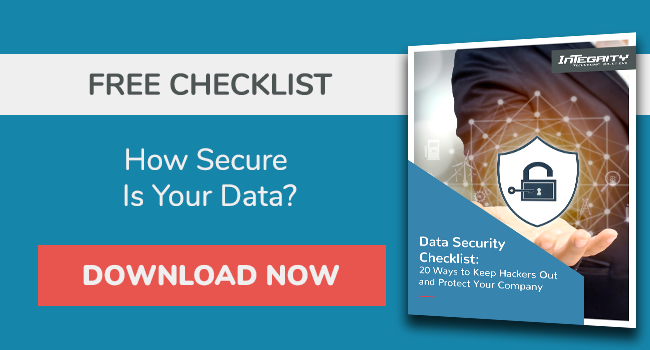Elevating Standards & Reducing Risk: The Importance of SAFER Guides in Modern Medical Practices

Earlier this year, Change Healthcare experienced a ransomware attack that could have exposed up to 1 out of 3 Americans’ data.
The full scale of the breach is still being assessed, but reports indicate that 4 terabytes of data were exposed and Change Healthcare paid a $22 million ransom—only to have another scam pulled, requiring them to pay more.
This data breach continues to make headlines well into 2024.
Not Just For Big Business
However, most breaches aren’t given this much attention because they happen to smaller businesses.
That’s right—even a $100,000 ransom, for example, can cripple a healthcare practice or provider for days, halting patient visits and other critical operations.
The Office for Civil Rights (OCR) has received more than 360,000 complaints since 2003, initiating nearly 1,200 compliance reviews.
Two of the compliance reviews most often alleged to OCR are:
- Lack of safeguards of protected health information, like security awareness training and securing locations and equipment.
- Lack of administrative safeguards of electronic protected health information, such as a failure to conduct risk assessments or a lack of written policies and procedures.
Practices and providers may experience many kinds of backlash and impact as a result of an OCR investigation, including fines, reduced payments through the Merit-Based Payment System (MIPS), and the erosion of their reputation.
To assess and mitigate their risk, healthcare organizations can look to the SAFER Guides.
What Are The SAFER Guides?
SAFER Guides are self-assessment tools designed to reduce the risks and vulnerabilities in their electronic medical record (EMR) or electronic health record (EHR) systems.
Developed by the Office of the National Coordinator for Health Information Technology (ONC), these nine guides provide a comprehensive framework for identifying and addressing potential safety issues related to EHRs.
Most organizations should start with the Foundational guides.
The Purpose Of SAFER Guides
The primary purpose of SAFER Guides is to ensure that EHR systems are configured, implemented, and used to enhance patient safety and minimize risks.
They offer evidence-based recommendations and best practices to help healthcare organizations:
- Enhance System Resilience: Ensure that EHR systems can withstand and recover from potential disruptions or errors.
- Improve Patient Safety: Reduce the likelihood of EHR-related errors that could harm patients.
- Optimize EHR Usability: Make EHR systems more user-friendly and efficient for healthcare providers.
The acronym stands for Safety Assurance Factors for EHR Resilience.
Though not a compliance requirement yet, completing an annual SAFER Guide will still help practices and providers compare their security posture year over year, and identify vulnerabilities to reduce risk.
Structure of SAFER Guides
SAFER Guides are divided into several topic-specific guides, each focusing on a critical aspect of EHR safety.
These include:
- High-Priority Practices: Key practices that have the highest impact on patient safety.
- Organizational Responsibilities: Guidelines for leadership and organizational policies.
- Contingency Planning: Strategies for ensuring EHR system availability during unplanned downtime.
- System Configuration: Recommendations for the initial setup and ongoing maintenance of EHR systems.
- System Interfaces: Best practices for managing the interfaces between different systems and devices.
- Patient Identification: Methods to ensure accurate patient identification to prevent mix-ups.
- Communication and Work Processes: Enhancing communication and workflow within the healthcare setting.
- Clinical Processes: Best practices for clinical documentation and decision support.
- Patient Engagement: Strategies for involving patients in their own care using EHRs.
Implementation of SAFER Guides
Healthcare organizations can implement SAFER Guides through the following steps:
- Assessment: Conduct self-assessments using the checklists and worksheets provided in each guide to identify areas of improvement.
- Action Plan: Develop a detailed action plan based on the assessment findings.
- Implementation: Execute the action plan with input and cooperation from all relevant stakeholders and partners.
- Evaluation: Continuously monitor and evaluate the impact of changes made, and make further adjustments as needed.
In general, SAFER guides usually require a team to facilitate and complete them.
Internal staff may not know the answers and may need to work with their IT provider.
Benefits of Using SAFER Guides
Based on how your organization answered its questions, the SAFER Guides automatically generate a follow-up action plan.
Implementing SAFER Guides can lead to numerous benefits, including:
- Reduced Risk of EHR-Related Errors: By following best practices, healthcare providers can minimize errors associated with EHR use.
- Improved Patient Outcomes: Enhanced EHR safety directly contributes to better patient care and outcomes.
- Increased Efficiency: Optimized EHR systems improve workflow efficiency for healthcare providers.
- Compliance: Adherence to SAFER Guide recommendations can help organizations meet regulatory and accreditation requirements. For example, if a practice experiences a breach, OCR could reduce fines for organizations that have documented proof that it’s making an effort to manage risk.
Conclusion
SAFER Guides are an essential resource for medical practices and providers aiming to maximize the safety and effectiveness of their EHR systems.
By following these guides, organizations can improve patient safety, enhance system resilience, and ensure optimal use of their EHR technology.
We’ve found that many healthcare administrators are often in denial about these protocols, scared of how to correctly asses their organization and what the results will be.
They often think that the plan will only result in new expenses and effort.
That’s where partnering with a managed IT provider with experience in healthcare can help.
Ask your IT provider if they have a healthcare practice administrator to help translate compliance requirements and technical scenarios for people like administrators and compliance officers.
Finally, although it’s not a replacement for a SAFER Guides assessment, you can fill out a 20-question data security checklist to find out how protected your facility’s data is.

